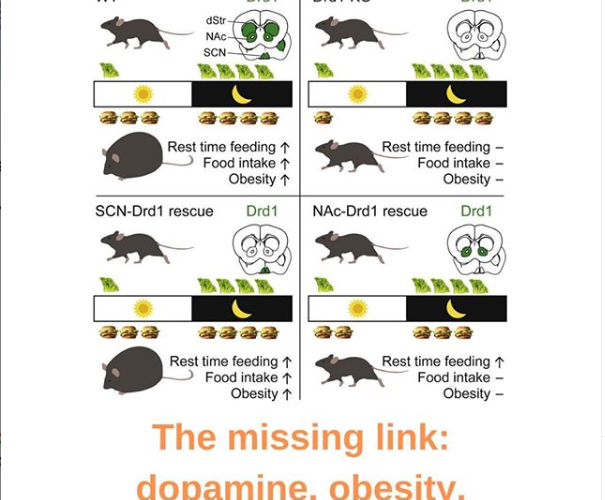Nearly 77% of the US population is now overweight. This dramatic change in the last 50 years is correlated with the availability of highly processed foods, and with a dramatic increase in chronic pain.
In a mouse model, high-calorie foods, which induces a dopamine release, disrupted normal feeding schedules, resulting in overconsumption.
Additionally, the “knockout” mouse model which had dopamine signaling disrupted, didn’t seek the dietary “rewarding pleasure,” maintained a normal eating schedule, and did not become obese.
Practical Conclusion:
Diet-induced obesity requires dopamine (DA)-Drd1 signaling
Avoid eating outside a normal eating window, typically less than eight hours out of 24, allowing glycogen depletion in the liver and preventing insulin resistance.
How is this relevant to chronic pain:
I practice in the field of interventional pain, addiction, and obesity/ metainflammation.
1. Patients with chronic pain have a signaling mechanism, whether induced by medications or their endogenous pain, that causes them to seek out dopaminergic stimulation, to relieve their pain.
2. Some of these dopaminergic stimulation can be substituted by dietary intake.
3. Excessive non-nutritive dietary intake leads to obesity and visceral adipose tissue accumulation, which is inflammatory.
4. Excessive inflammatory mediators aggravate pain, and the cycle repeats.






